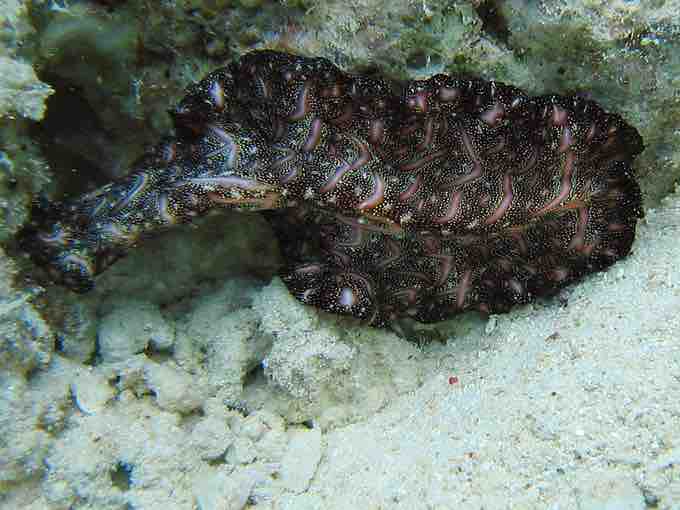Phylum Platyhelminthes
Phylum Platyhelminthes is composed of the flatworms: acoelomate organisms that include many free-living and parasitic forms. Most of the flatworms are classified in the superphylum Lophotrochozoa, which also includes the mollusks and annelids. The Platyhelminthes consist of two lineages: the Catenulida and the Rhabditophora. The Catenulida, or "chain worms" is a small clade of just over 100 species. These worms typically reproduce asexually by budding. However, the offspring do not fully detach from the parents; therefore, they resemble a chain. The remaining flatworms discussed here are part of the Rhabditophora.
Many flatworms are parasitic, including important parasites of humans. Flatworms have three embryonic tissue layers that give rise to surfaces that cover tissues (from ectoderm), internal tissues (from mesoderm), and line the digestive system (from endoderm). The epidermal tissue is a single layer cells or a layer of fused cells (syncytium) that covers a layer of circular muscle above a layer of longitudinal muscle. The mesodermal tissues include mesenchymal cells that contain collagen and support secretory cells that secrete mucus and other materials at the surface. The flatworms are acoelomates: their bodies are solid between the outer surface and the cavity of the digestive system.
Physiological Processes of Flatworms
The free-living species of flatworms are predators or scavengers. Parasitic forms feed on the tissues of their hosts. Most flatworms have a gastrovascular cavity rather than a complete digestive system; in such animals, the "mouth" is also used to expel waste materials from the digestive system. Some species also have an anal opening. The gut may be a simple sac or highly branched. Digestion is extracellular, with digested materials taken in to the cells of the gut lining by phagocytosis. One group, the cestodes, lacks a digestive system. Flatworms have an excretory system with a network of tubules throughout the body with openings to the environment and nearby flame cells, whose cilia beat to direct waste fluids concentrated in the tubules out of the body. The system is responsible for the regulation of dissolved salts and the excretion of nitrogenous wastes. The nervous system consists of a pair of nerve cords running the length of the body with connections between them and a large ganglion or concentration of nerves at the anterior end of the worm, where there may also be a concentration of photosensory and chemosensory cells.
There is neither a circulatory nor respiratory system, with gas and nutrient exchange dependent on diffusion and cell-cell junctions. This necessarily limits the thickness of the body in these organisms, constraining them to be "flat" worms. In addition, most flatworm species are monoecious; typically, fertilization is internal. Asexual reproduction is common in some groups.
Diversity of Flatworms
Platyhelminthes are traditionally divided into four classes: Turbellaria, Monogenea, Trematoda, and Cestoda. The class Turbellaria includes mainly free-living, marine species, although some species live in freshwater or moist terrestrial environments . The ventral epidermis of turbellarians is ciliated which facilitates their locomotion. Some turbellarians are capable of remarkable feats of regeneration: they may regrow the entire body from a small fragment.

Turbellaria
Pseudobiceros bedfordi (Bedford's Flatworm), a member of the Turbellaria, is a marine species which uses the epidermis of its belly for locomotion.
The monogeneans are ectoparasites, mostly of fish, with simple life cycles that consist of a free-swimming larva that attaches to a fish to begin transformation to the parasitic adult form. The worms may produce enzymes that digest the host tissues or simply graze on surface mucus and skin particles.
The trematodes, or flukes, are internal parasites of mollusks and many other groups, including humans . Trematodes have complex life cycles that involve a primary host in which sexual reproduction occurs and one or more secondary hosts in which asexual reproduction occurs. The primary host is almost always a mollusk. Trematodes are responsible for serious human diseases including schistosomiasis, a blood fluke.

Trematodes
Botulus microporus is a trematode that lives only in the intestinal tract of Lancetfish, Alepisaurus ferox.
The cestodes, or tapeworms, are also internal parasites, mainly of vertebrates . Tapeworms live in the intestinal tract of the primary host, remaining fixed by using a sucker on the anterior end, or scolex, of the tapeworm body. The remainder of the tapeworm is composed of a long series of units called proglottids. Each may contain an excretory system with flame cells and both female and male reproductive structures. Tapeworms do not possess a digestive system; instead, they absorb nutrients from the food matter passing through them in the host's intestine.

Cestodes
Taenia saginata, also known as Taeniarhynchus saginata or the beef tapeworm, is a parasite of both cattle and humans. It displays the long series of proglottid subunits characteristic of the species.